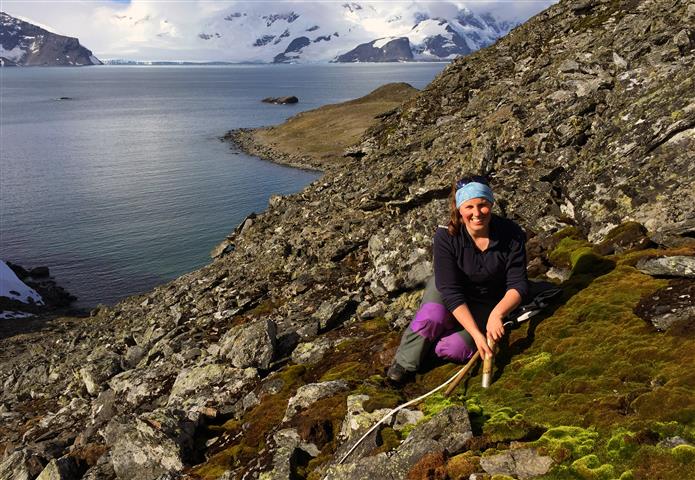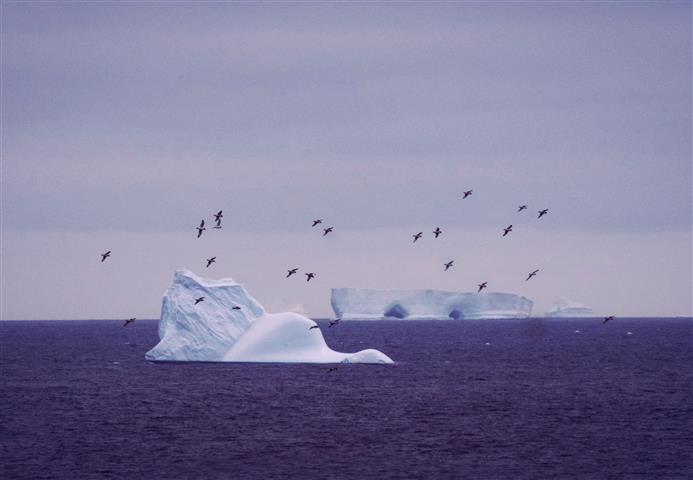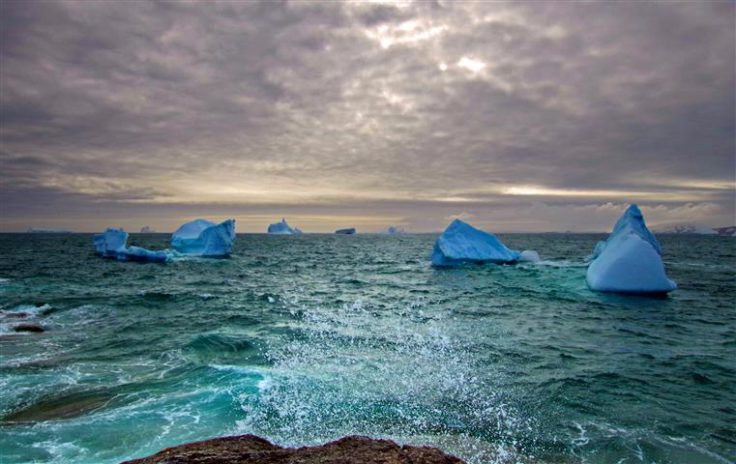Signy Island: Water and Ice
17 February, 2017 Signy
I wish I could tell you how dramatically isolated we feel here – how the expanse of an ocean that swirls the entire circumference of the planet and stands between you and any other landmass, makes you feel utterly cut off. How the dramatic landscape and harsh climate make work near impossible and living here an enduring and testing chore.
But in reality the comforts afforded by our base here on Signy, despite it being the most remote and inaccessible of BAS’s research stations, make it very homey. We have heat, power, internet (just!), and a surprisingly good phone line. We have a pantry brimming with every food you could want, and even food that you really shouldn’t want, lest your waistline starts a new war with just about everything in your wardrobe. If it weren’t for the fact that everything is free, and a lot of it is covered in chocolate, it is like entering Sainsbury’s up there. Although, our fresh groceries aisle is reduced to a few carrots and beetroots who sacked off any thoughts of a destiny fulfilled in a stew and have started a new life, colonising rich ecosystems at the bottom of their cardboard box world. So, we eat well, we stay warm, we speak to friends and family, we have a good routine, and have the luxury of reading about the mind-baffling things that are going on back in the “the world” right now. I’m sorry to say, it’s very comfortable and quite undramatic in that regard.
We are seven people here: four scientists – the first time Signy has ever had an all-female science team; the base commander Matt, who is also a carpenter; Alex the field assistant/ tame mountaineer; and our technician, who has the job of being mechanic, plumber, electrician and general assistant, which is no small feat. Iain, our tech, probably has the most responsibility here (in my opinion): without him we would have no water from the reverse osmosis machine and no heat or power from the generators. If they break, he fixes them. Whilst I can wax lyrical about the minutia of trophic cascades in ecosystems, my mechanical skills boil down to being able to change a tyre and blow a head gasket. Like all technicians that BAS employ, he’s invaluable to our success here. I feel it’s important to emphasise the trade skills needed to run a scientific operation like this, because it is often the beautiful drama of the place or the scientific findings that get the attention. It’s why we are here. But the how we are here is because of the carpenters, plumbers, electricians and engineers, problem-solving on a scale just as clever as any science. It’s a symbiotic relationship that you are often cut off from in traditional science, and even non-science workplace settings.
So, the science! It is going well…I think. At least I have a 1Tb hard-drive that is filling up fast with data, and a brain that I’m quite sure overflowed last week. It was a messy, emotional affair, as befits remembering that for all intents and purposes, you are stranded on a small island in the middle of the Southern Ocean with the same 6 people, day in and day out, for months on end. When science is literally coming out of your ears, you don’t have enough hours in the day to mop it up and you find yourself in such a situation, in such a place, it can strain the nerves! Anyone who comes down here and tells you it was riotous fun every single day is either a fool, or lying. Maybe both. But one thing it definitely is, is remarkable.

Every day is extraordinary, I don’t use that word lightly: I do the dishes whilst watching juvenile elephant seals practice their battle tactics. I fall asleep to the unusual cooing, croaking sounds from storm petrels that nest in the cliffs. Out of my lab window I see the snow-capped mountains of Jane Peak and across the straights to our stunning neighbour, Coronation Island. It’s a gorgeous view, ice caps and hanging glaciers turning ever bluer as the snow melts from them, the further into summer we get. A short walk to Bernsten Point, a few hundred meters away from base, the vista opens to the whole of the straights between Coronation and Signy. A view that is always littered with the most impressive icebergs that drift up to us from the great ice masses of the Antarctic Continent. No trip to the point is the same as bergs melt and break apart, and other new ones get blown in. Icebergs previously large enough to land planes on heave chunks of ice the size of tower blocks into the ocean that in turn carves new arches and caves into its base. The wind whips the tops of others, its warming strokes sculpting the ice into shapes that would have pleased Dali.
It is icebergs that I’ve fallen for the most here. When I look out to sea, there is no question of where I am. Ice, in its most incredible, beautiful and humbling form. Towering masses that are geological in age, having spent eons locked into ice shelves amassing their improbable size through the accumulation of mere snowflakes. They sail about the sea, changing the horizons every day. It is impossible to tire of them. They are, to use a highly overused word in its full sense, awesome.

Equally as enchanting are the clouds. We can get all types in a day. I mean it! Bouncy cumulus, wispy cirrus, smothering stratus, startling lenticular. Rarely is it just grey, or even rarer, just blue. I don’t have much of a relationship with clouds in the UK, they are either there or they are not. They make sunsets more interesting, but more often than not they are harbingers of gloom, mirth and wet cycle commutes. Here they are spectacular, and useful weather forecasters too: the other-worldly lenticular clouds have become solid symbols of an impending and often exciting storm. They give scale to far horizons and distant mountains. And they are as much of the landscape as the sea or snow, the hills and valleys.

Enough of water formations, you want to hear of penguins and seals don’t you really?! And being a polar biologist I’d better tell you. But I’ll save that for another post!